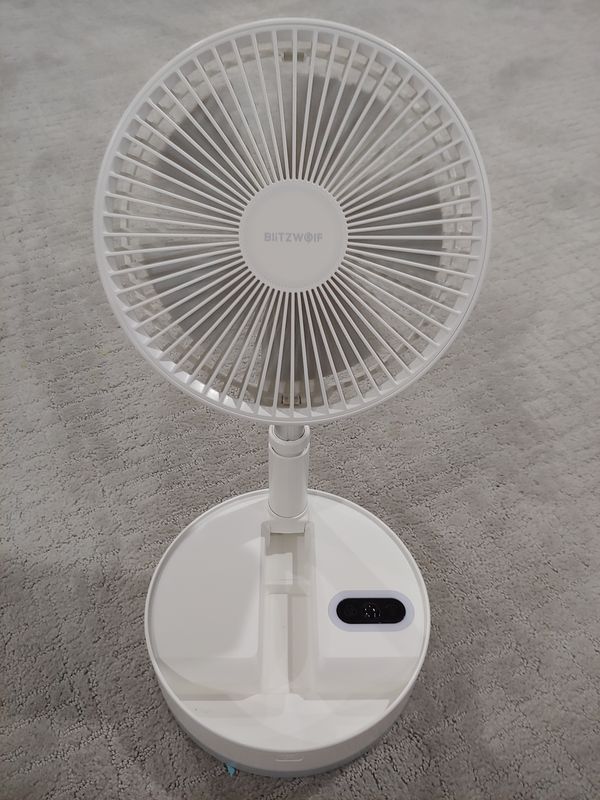
REVIEW – If the Swiss Army knife is first and foremost a knife, then the BlitzWolf BW-FUN7 may be the Swiss Army knife of fans. It is an oscillating, rechargeable, telescopic, foldable, multi-speed, run timer, nightlamp, remote control fan. I have reviewed it to see how it works. Read on to see what I think!
What is it?
The BlitzWolf BW-FUN7 fan is primarily a smaller pedestal fan. The head angle and height of the fan may be adjusted to suit the user’s needs. The fan supports local and remote control operation of power, oscillation, fan speed and night light. The remote control can also program a sleep timer. The fan is also useful when away from home because it can be folded up to a small footprint and may be powered by an internal battery or by a type C USB cable.
What’s in the box?
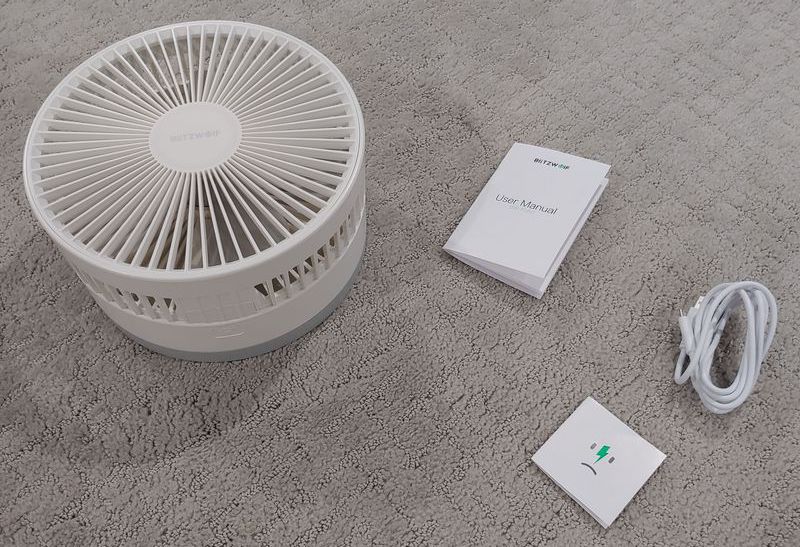
- Fan
- Remote control and lithium battery
- 5 foot USB type C cable
Hardware specs
- Model:BW-FUN7
- Material:ABS
- Net Weight:1.37kg
- Folded Size:206*206*114mm
- Max Height:206*206*976.5mm
- Battery Capacity:3.7V 10800mAh
- Working Voltage:DC 3.20~4.20V
- Charging Time:7h±0.5h
- Rated Input:DC 5V-2A
- Max. Power:5W
- LED Power:0.7W
Level low medium high Noise 32 dB 35 dB 38 dB Power Consumption 350 mA/hr 800 mA/hr 1200 mA/hr Fan Speed 2.54 m/s 3.34 m/s 4.0 m/s Runtime 23±0.5 h 16±0.5 h 8±0.5 h
Design and features
Unboxing

The fan comes in a white cardboard box printed with the manufacturer in the top right corner and the model number in large lettering across the front. The top includes a plastic handle and the bottom is unlabeled. Only the side panel describes the contents as a foldable fan.
Labeling the box with BW-FUN7 may be a little confusing. A foldable fan is probably not the first thing that most people would think of when asked what they thought a BW-FUN7 was and it may be close to the last thing that most people would guess.
Bell and Howel sell a similarly designed fan and the packaging for their unit is much more informative.
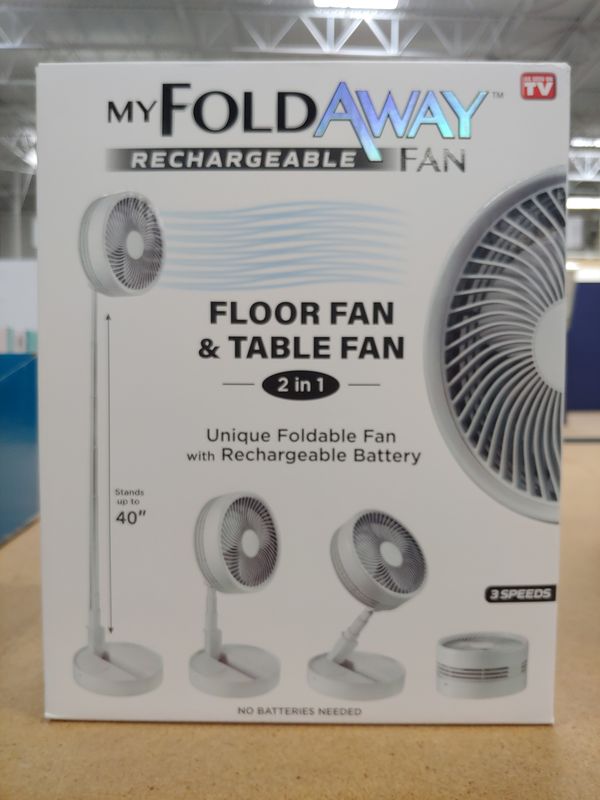
Design
The design of the fan is very similar to models sold by other manufacturers. I’m unsure which manufacturer created the original design of this fan, but like robot vacuums, the different models include subtle differences in quality and features. Many similar-looking fans for sale on Amazon, and including the box pictured above for sale at BJ’s Wholesale, for instance, don’t include a light, remote control, or oscillation.
When the fan is compacted into its travel form it is downright adorable. There is no latch to keep it compact but the fan stays in a folded condition because of the resistance built into the joints.
The joint at the base of the fan is designed to be opened or closed fully. However, it is possible to rest the fan at the front lip of the base for a very low profile fan. If opening the base joint to its full position, the locking collar at the base of the extendable shaft needs to be rotated so that it tight against the base of the fan. Otherwise, the fan can easily tip over when the shaft is extended. The joint at the top of the fan can be freely positioned 200 degrees around the extended shaft. This flexibility means that the airstream from the fan can be directed just about anywhere from completely horizontal to about 20 degrees down towards the floor. There is no lock to this joint and there are no teeth to keep the position from adjusting; it has a fixed amount of friction to keep it in place. Over time the joint may lose some of its bite and the fan may fail to keep its set position. It would be an improvement if there was a locking mechanism or a way to maintain the friction holding this joint.
The extendable shaft is composed of seven segments. When the shaft is fully extended the center of the fan is about 37.5 inches above the floor. Like the fan head position, there is no set screw to keep this fan extended; the friction of the bushings keep it in place.
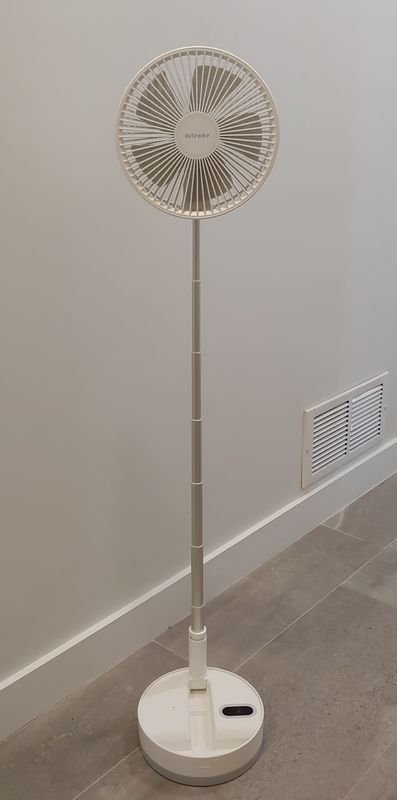
The fan is 7 inches across and has 5 blades. The blades are curved to lower the noise that the fan makes while slicing into the air. The whole fan head may be disassembled for cleaning. Gripping the front and rotating it slightly counterclockwise will release 4 bayonet fittings around the perimeter. The fan may be removed by turning the notched cap at the front of the fan. The cap is reverse-threaded so that the fan doesn’t turn itself loose. Once the fan is removed the rear of the fan guard can be removed by loosening the notched ring around the rear. This is also reverse threaded but doesn’t need to be.
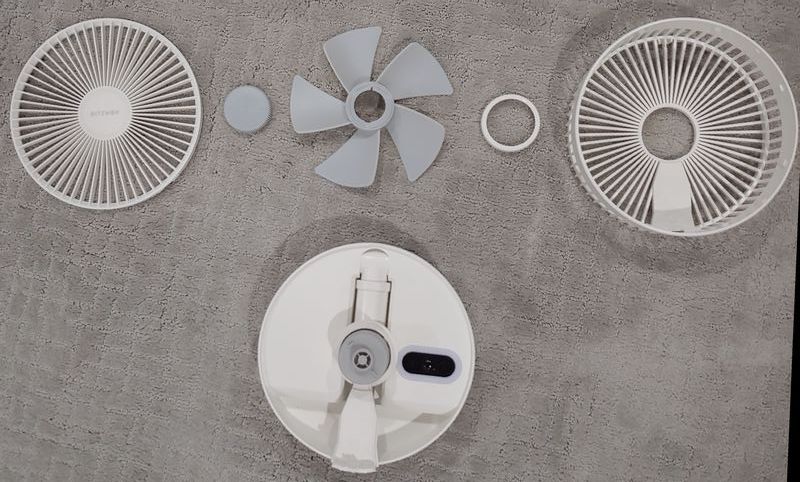
Operation
The fan control is at the base of the fan. It is a black plastic oval with a domed center section (for the remote sensor) surrounded by a white translucent lamp. The left side of the control has an image of a fan and the right side has an image of a lamp with a double-sided arrow across its top. The control is touch-sensitive and does not actually have any moving parts. Touching the control on the left will cycle through the 4 speed modes: low, medium, high, and varying. The last speed mode simulates gusts of wind by repeatedly starting at medium speed and then stopping in a 10-second loop. I found that this mode was more monotonous than the constant hum of the fan. However this is a good compromise to get medium speed gusts of wind over a long duration if the fan is working on battery power. The display will show the fan speed mode on top of the IR in small LEDs and the battery capacity at the base of the dome, also with 4 LEDs. Each time a mode is changed the fan emits a high pitched beep. I wish that the beep could be disabled but unfortunately, there is no way to do this.
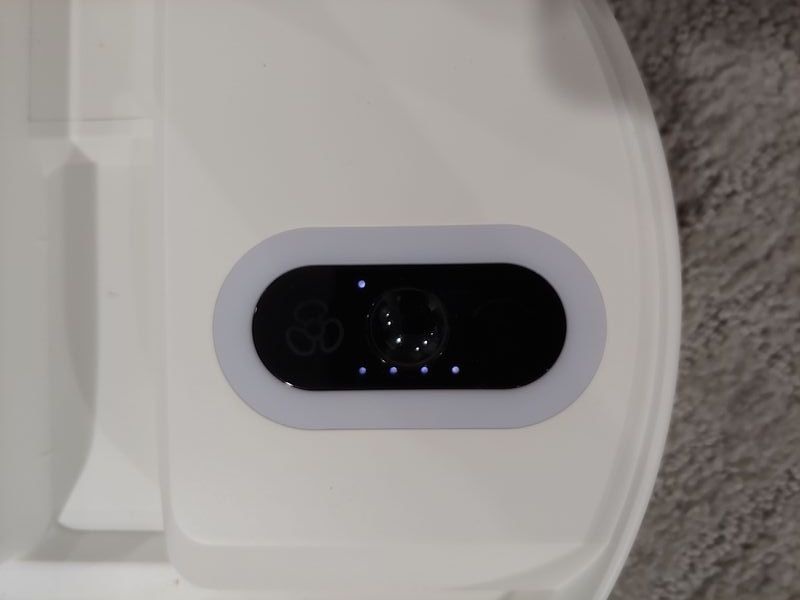
Pressing the right side of the control starts the oscillation. The fan moves in a 45 degree arc and takes 30 seconds to complete a round trip oscillation. The motor driving the oscillation is separate from the fan motor and it operates at a fixed speed.
Pressing and holding the right side turns on the night light. This is a great add on to the fan, especially since it can be turned on and off with the remote control.
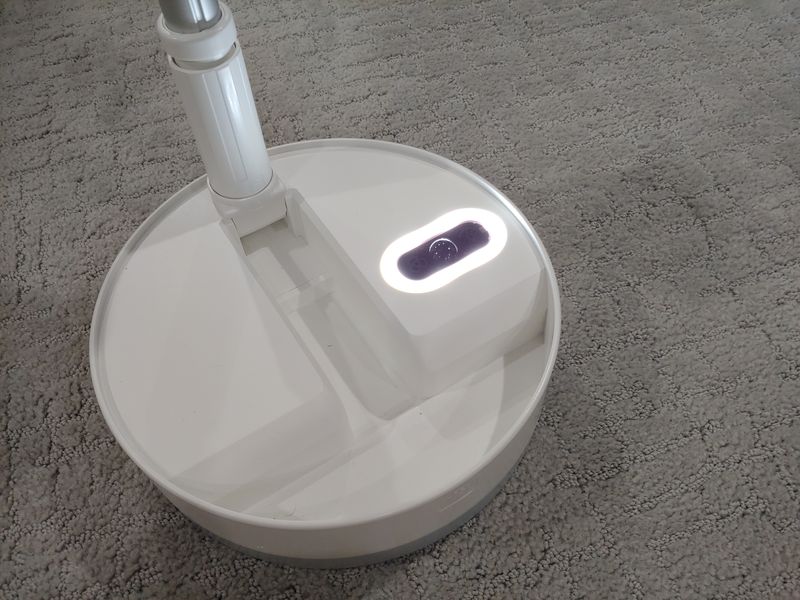
Three silicone feet on the base keep it from moving around slick surfaces and help isolate noise from the motors.
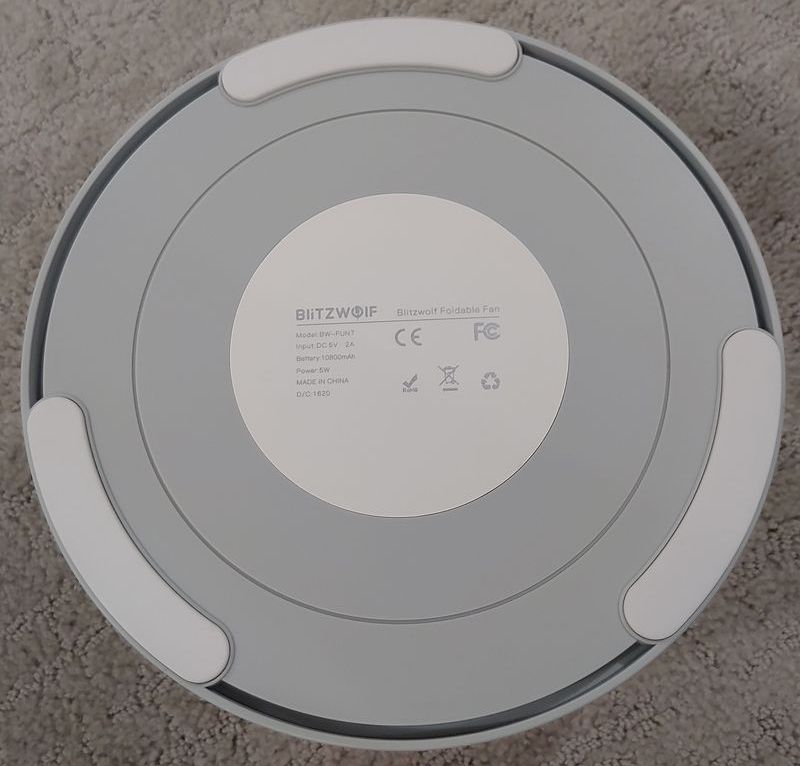
The fan can also be operated using a small remote control. The remote has 5 blister buttons that mimic the symbols on the fan base. The remote allows the fan to be run on a timer. Pushing the timer button cycles through 1 hour, 2 hour, 3 hour, 4 hour, and cancel timer settings. The LEDs that normally display the battery power will briefly illuminate to reflect the selected timer duration.
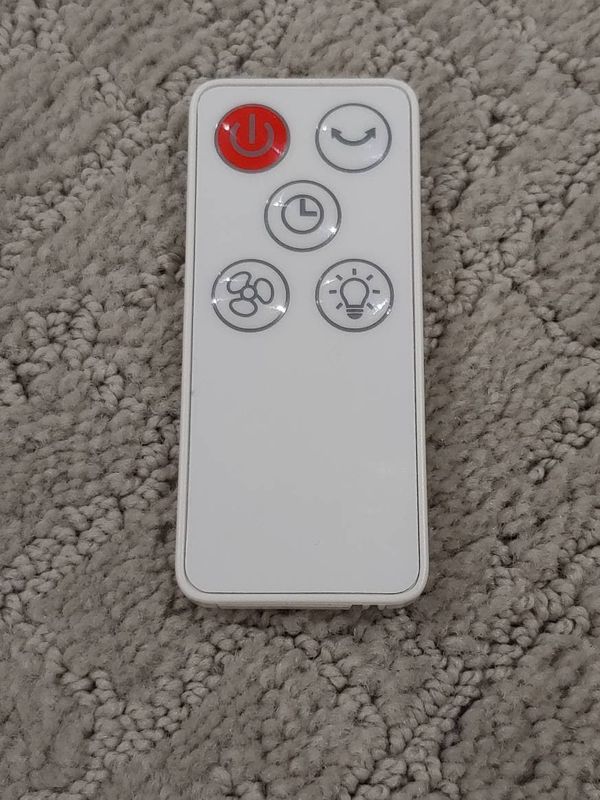
Performance
I don’t have an anemometer for measuring the performance of the fan but since this appears to be a DC brushless motor the fan speed should be very precise. The noise that I recorded using a phone app is about equal to the values stated in the table above. The fan does have that typical fan sound.
In an open floor plan, I’m still able to feel the breeze that the fan generates at 11 feet away.
One performance issue that I had was that I have found that I need to jostle the mechanism to rotate counterclockwise if I move the fan room to room. If I leave the fan In place then the oscillation will work without manual intervention.
What I like
- Portable
- relatively powerful
- remote controlled
What I’d change
- no beep-less mode
- the oscillating drive is finicky
- the top joint may stop holding position over time.
Final thoughts
There are times that a portable battery-powered fan is indispensable, such as during a summer blackout or when RV’ing. The BlitzWolf BW-FUN7 may fill these rolls nicely. If there weren’t issues with the oscillating drive then this would be an excellent product. I still think it is very good but there are some initial quality issues that lead me to question the long-term performance of this product.
Price: $69.99
Where to buy: Amazon
Source: The sample of this product was provided by BlitzWolf.



Gadgeteer Comment Policy - Please read before commenting
Do yo believe this would be powerful enough to be effective on an outdoor deck on a hot summer day?
It oscillates and will still be (barely) detectable about 10 feet away. I’d say on a hot summer day it may be good for a picnic table but not a whole deck.